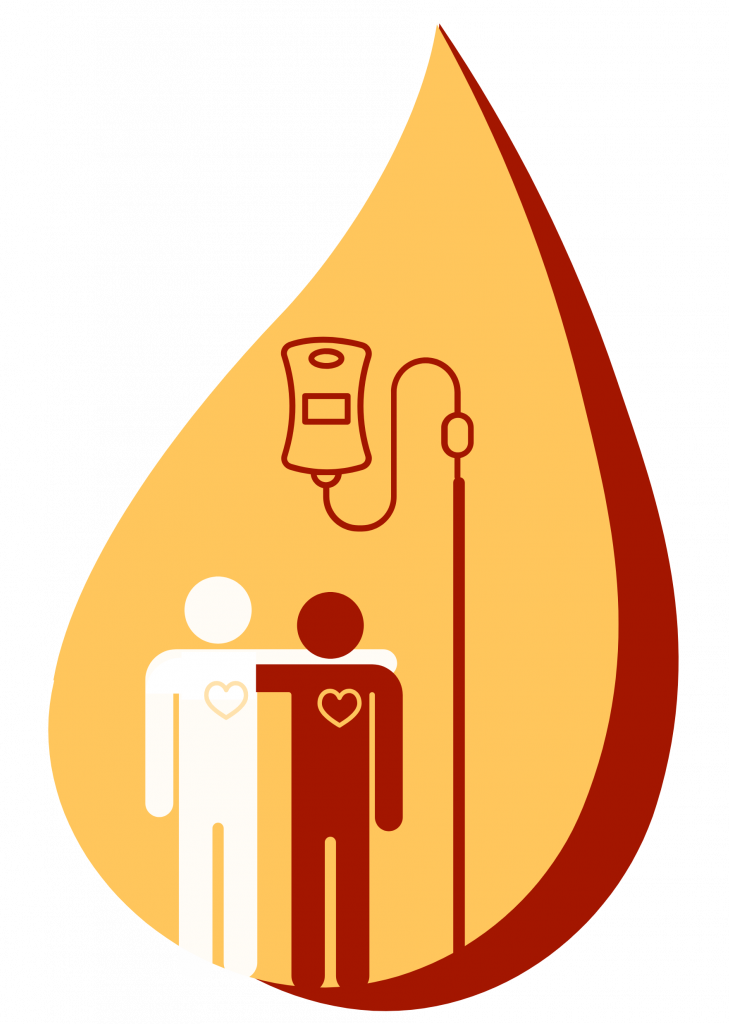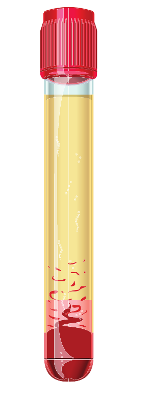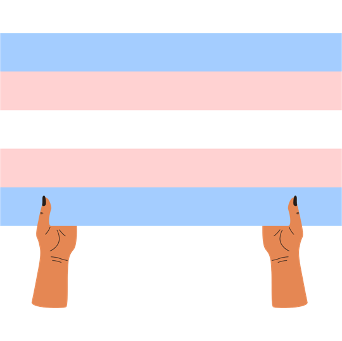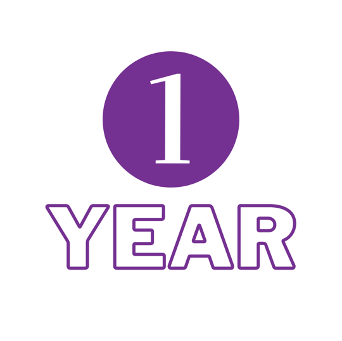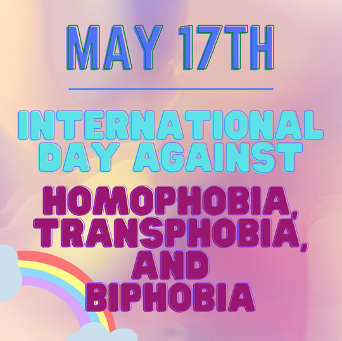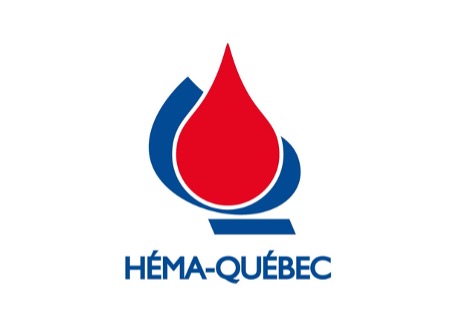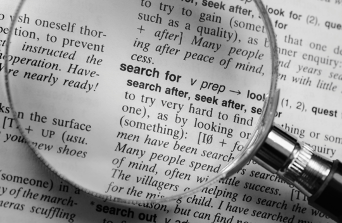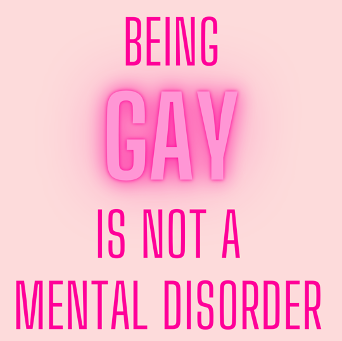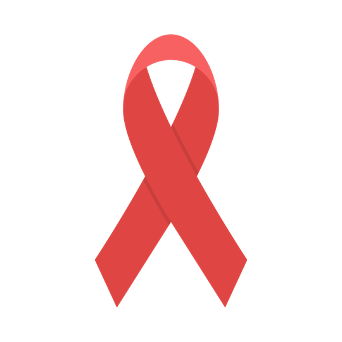Blood Ban Timeline
Blood Ban Timeline
Change has been a long time coming. Gay, bisexual and other men who have sex with men communities have endured stigma and hurt for decades because of these discriminatory policies. There have been decades of community activism and pressure to change the discriminatory “MSM policy” has slowly pushed the needle towards fairer policies. There is still a long way to go.

Sexual behaviour based screening is implemented at all Canadian Blood Services donor centres across Canada.
All donors (no matter their gender or sexual orientation or if they’re donating whole blood or plasma) will now be asked if they have had a new sexual partner in the last 3 months. Those who answer “yes” to either of those questions, they will further be asked if they have had anal sex (either receptive or insertive, aka top or bottom) in the last 3 months. If they have, they will be ineligible to donate. This means that more gbMSM are eligible to donate – but not all. The trans donor criteria is also removed. Trans individuals can register in their gender rather than as their sex assigned at birth. However, the system is still set up to require a choice between male or female, so nonbinary and other gender diverse donors will still be misgendered.
Health Canada approves sexual behaviour-based screening for all donors and for all blood products. The trans donor criteria are also removed
Canadian Blood Services announces that they have received approval from Health Canada to change to a sexual behaviour based screening criteria. Health Canada has also approved removing criteria that forced asked trans people about lower genital gender affirming surgery and sex assigned at birth.
The changes are expected to be launched in donor centres in September 2022.
Canadian Blood Services requests behaviour-based screening for all donors and for all blood products
Health Canada approves Canadian Blood Services’ proposal for a program that allows gbMSM who have not had a new sexual partner and who have not had multiple sexual partners in the last 3 months to donate plasma only (not blood) at two donor centres: London, Ontario and Calgary, Alberta.
An additional part of the program that Health Canada required is to hold all plasma donations from gbMSM for 60 days. Donations will be released only after another eligible donation after this 60-day period. More information about the plasma program is available throughout this site.
Canadian Blood Services now allows some gay, bisexual men to donate plasma in Calgary, London, Ont.
Federal Court judge decides that Health Canada should be a part of Christopher Karas’ human rights inquiry
In June 2021, a Federal Court judge dismissed the Attorney General of Canada’s application to dismiss Christopher Karas’ case at the Canadian Human Rights Tribunal, saying that the relationship between Health Canada and Canadian Blood Services and their roles in setting blood policies requires further inquiry by the Tribunal.
Federal judge rejects Health Canada’s claim it has no role in barring gay men from donating blood
Christopher Karas’s complaint (launched in 2016) to the Canadian Human Rights Commission (CHRC) gets deferred to the Canadian Human Rights Tribunal (CHRT)
The CHRC defers the complaint to the Canadian Human Rights Tribunal, citing that the CHRT is more appropriate to consider the “highly technical evidence”. However, the Attorney General of Canada has submitted an application to dismiss the CHRC’s decision to defer to the Tribunal.
Karas’s complaint was filed against Health Canada as well as Canadian Blood Services, and the Attorney General asserts that because the policy is set by CBS, it is not within the CHRT’s jurisdiction to judge. The CHRT’s jurisdiction only allows them to hear complaints of federally-regulated employers and service providers. While Canadian Blood Services and Héma-Québec operate at arms-length from the government, their regulator (Health Canada) is a federal institution. See here for more information on the relationship between and different roles of Health Canada and Canadian Blood Services.
Canadian Blood Services now allows some gay, bisexual men to donate plasma in Calgary, London, Ont.
Brampton man’s human rights complaint may soon be dismissed.
LGBT activist’s complaint over wait period for blood donation referred to human rights tribunal
A Guide To Understanding The Canadian Human Rights Tribunal
Identifying as transgender is no longer considered a mental disorder by the World Health Organization (WHO)
15 years after homosexuality stopped being classified as a mental disorder, in May of 2019, the World Health Organization (WHO) removes “gender identity disorder” from their International Classification of Diseases (ICD). This means trans individuals are no longer considered to have a mental disorder.
The World Health Organization Will Stop Classifying Transgender People as Having a ‘Mental Disorder’
PrEP/PEP use is added to the donor screening questionnaire
Canadian Blood Services introduces screening for pre- or post-exposure prophylaxis (PrEP/PEP), asking all donors if they have taken the HIV-preventative medication in the last 4 months.
This screening criterion is added to the Donor Health Questionnaire because although the medication is a critical advance in the fight against HIV, Canadian Blood Services argue that it may interfere with the tests they use to detect infections in blood.
Saeed, S., Goldman, M., Uzikanin, S., & O’Brien, S. F. (2021). Evaluation of a pre-exposure prophylaxis (PrEP)/post-exposure prophylaxis (PEP) deferral policy among blood donors. Transfusion. DOI: 10.1111/trf.16349
The 1-year wait for gay, bi, and all men who have sex with men to be able to donate blood is reduced to 3 months
A reduction from 12 months and another step toward an inclusive, evidence-based deferral, gbMSM can now donate after 3 months of abstinence (from male-male sex).
The 3 month period is chosen because the tests used on donations to check for infections (like HIV, syphilis, or hepatitis) have what is known as a “window period”. This is the time between someone getting an infection and tests being able to reliably detect it. The donor health questionnaire is used to reduce the risk of new infections that are missed by tests from making their way into the blood supply.
Blood-donation deferral period drops to 3 months for gay, bisexual men
Trans donors start being screened based on sex assigned at birth unless they’ve had lower genital gender-affirming surgery
Before this change was introduced, trans donors may have been screened as female at one clinic but male at another. To standardize the screening process across clinics, trans donors are now screened as their sex assigned at birth unless they have had lower genital gender-affirming surgery at least 3 months before donating.
Many trans people choose not to undergo gender-affirming surgeries, and the public outcry from activists is immediate as this policy is considered transphobic.
Canadian Blood Services places restrictions on transgender donors
The 5-year wait for gay, bi, and all men who have sex with men to be able to donate blood is reduced to 1 year
A reduction from 5 years and another step toward an inclusive, evidence-based policy, gbMSM can now donate after 1 year of abstinence (from male-male sex).
Health Canada also provides $3 million to Canadian Blood Services and Héma-Québec to fund research and collect data targeting policy change for men who have sex with men.
Deferral period for sexually active gay men to give blood in Canada cut to one year
Christopher Karas files a lawsuit against Canadian Blood Services and Health Canada for discrimination
Karas challenges the MSM policy (that sexually active men who have sex with other men are not allowed to donate) at the Canadian Human Rights Commission after being barred from donating blood.
Stephen McCarthy and his dad, Jim McCarthy, launch Ally Blood Donor Clinics
Motivated by his work studying a cure for HIV and his desire to help, Stephen McCarthy went to donate blood and found that he was unable due to the exclusion criterion for men who had sex with another man in the past 5 years. He worked with Canadian Blood Services and the LGBT2Q+ community and launched Ally Blood Donor clinics, a solution where those who are ineligible for any reason can bring an eligible volunteer to donate on their behalf.
U of T student spearheads Ally Blood Donor clinics
The permanent ban for gay, bi, and all men who have sex with men is reduced to 5 years
Motivated by his work studying a cure for HIV and his desire to help, Stephen McCarthy went to donate blood and found that he was unable due to the exclusion criterion for men who had sex with another man in the past 5 years. He worked with Canadian Blood Services and the LGBT2Q+ community and launched Ally Blood Donor clinics, a solution where those who are ineligible for any reason can bring an eligible volunteer to donate on their behalf.
ENDING THE LIFETIME BAN IS STILL DISCRIMINATORY
Justice Aitken of the Ontario Superior Court makes a ruling regarding the challenge of the Charter of Rights and Freedoms
The Freeman v. Canadian Blood Services case began in 2002 when Mr. Freeman countersued CBS for discrimination due to his sexual orientation. Justice Aitken ultimately sides with CBS, ruling that because CBS is a non-profit organization and is not a government entity, it’s not subject to the Charter. She acknowledges that the permanent ban policy is not justified by evidence (disappointing activist groups by not ordering for this to be rectified), but rules that it is based on health and safety considerations rather than discrimination. She also rules that blood donation is a gift (rather than a right), which CBS is under no legal obligation to accept.
Gay Ont. man loses blood donation negligence suit
Canadian Blood Services’ CEO Gives Initial Reaction to Ontario Superior Court
MSM Ruling
Canadian Blood Services reviews the blood donation ban for men who have sex with men. They conclude that it should be maintained
The CBS board of directors discuss changing the permanent blood donation ban, but ultimately decide to maintain it. However, they note that research is needed to close the gaps identified during consultations regarding what deferral period (length of time between sex and donation) would preserve blood safety.
Men who have sex men
Chronology events related msm policy
Same-sex marriage is legalized in Canada
In 2003, Ontario and British Columbia legalized same-sex marriage and in July 2005, Canada legalizes it across the country.
Same-Sex Marriage in Canada
International Day Against Homophobia, Transphobia, and Biphobia (IDAHOT or IDAHOBIT) is created on the anniversary of the World Health Organization’s decision to declassify homosexuality as a mental disorder
The day serves as a reminder of the discrimination those in the LGBT2Q+ communities have faced and continue to face. It supports global initiatives to “advance the rights of people with diverse sexual orientations, gender identities or expressions, and sex characteristics.”
WHAT IS MAY 17?
Kyle Freeman v. Canadian Blood Services court case begins
Kyle Freeman, a sexually active gay man, sends Canadian Blood Services an anonymous email revealing how he has donated 18 times between 1990 and 2002. CBS tracks down his identity and sues him for negligent misrepresentation and damages. Mr. Freeman then countersues CBS for discrimination against him on the basis of his sexual orientation.
The case is resolved in 2010 by Justice Aitken. See details of her conclusion in the 2010 timestamp above.
Case of Freeman vs. CBS & Attorney-General of Canada ends Decision expected in summer
Canadian Blood Services and Héma-Québec begin operations
Because the Krever Inquiry (see 1997 and 1993 timestamps below) determined that the “tainted blood tragedy” was due to systemic failures by the government and the Canadian Red Cross, Canadian Blood Services and Héma-Québec were created.
These two blood operators are independent, non-profit organizations, which operate at arms length from the government to collect blood products; however, they are regulated by Health Canada. See more about the differing roles of Health Canada and Canadian Blood Services.
Blood.ca – Our story
HÉMA-QUÉBEC OFFICIALLY BEGINS OPERATIONS
Krever Inquiry report regarding the “tainted blood tragedy” is released
Justice Krever makes several recommendations for the blood system. One key recommendation is that a national blood service be created and that it be operated independent of the government in order to deter any political interference. This led to the creation of Canadian Blood Services and Héma-Québec. Other recommendations include that compensation be made available for all those harmed due to receiving contaminated blood and blood products, and that donors not be paid for volunteering.
These two blood operators are independent, non-profit organizations, which operate at arms length from the government to collect blood products; however, they are regulated by Health Canada. See more about the differing roles of Health Canada and Canadian Blood Services.
Blood Program: 1946 until 1997-1998
Krever Inquiry
Krever Inquiry is established
The federal government establishes the Commission of Inquiry on the Blood System in Canada (AKA the Krever Inquiry), chaired by Justice Horace Krever. The inquiry was to investigate who was responsible for the “tainted blood tragedy” and how to prevent it from repeating.
Blood Program: 1946 until 1997-1998
Health Canada takes over as system regulator and the policy banning men who have sex with men gets legacied in
The policy permanently banning blood donations from any man who has had sex with another man since 1977 is legacied into Health Canada’s regulations after it took over for the Canadian Red Cross as regulator of blood services.
Men who have sex men
“Tainted Blood Tragedy”
Between 1980 and 1990, about 30,000 blood product recipients were infected with hepatitis C and approximately 2000 were infected with HIV. There were many factors that led to this tragedy, including governmental corruption and the prioritization of cheaper, less effective safety measures by the Canadian Red Cross, but the legacy of the tragedy would come to shape blood donation policies for gay, bisexual, and all men who have sex with men for decades to come.
Krever Inquiry
Start of the blood ban
Prior to the introduction of the Donor Health Assessment Questionnaire (DHAQ), the Canadian Red Cross was distributing pamphlets regarding groups at high risk for contracting AIDS to all potential donors in order to encourage self-exclusion. The introduction of the structured DHAQ brought with it a statement reading: “The following activities put you at risk for AIDS: intravenous drug use, living in an area where AIDS is common, regular treatment with blood and clotting factors, men who have sex with men, and sex with any of the above.” Those who fell under any of these categories were officially not allowed to donate.
MSM Donor Deferral Risk Assessment: An Analysis using Risk Management Principles
Homosexuality is no longer considered a mental disorder by the American Psychiatric Association
From the first edition of the American Psychiatric Association’s Diagnostic and Statistical Manual, published in 1952, homosexuality was seen as a mental disorder in need of a cure. By the revised version of the third edition, published in 1987, it was finally dropped entirely, putting an end to the pathologization of homosexuality.
When Homosexuality Stopped Being a Mental Disorder
The Canadian Red Cross starts testing all donations for HIV
As of March 1985, the U.S. Food and Drug Administration had granted license to distribute the HIV-antibody test kits and by May, almost all blood and plasma centres in the U.S. were testing donations, leaving Canada several months behind.
1985 Canadian Red Cross begins testing blood donations for HIV
Commission of Inquiry on the Blood System in Canada
A test for HIV is approved for use when testing blood donations
The enzyme-linked immunosorbent assay (ELISA) test, which detects antibodies and antigens that are produced in the blood in response to HIV, is approved for use when testing donations. However, it was not allowed to be used as a diagnostic tool for those living with the virus as it had a high rate of giving false positives. The window period for this test (the time between the start of a new infection and tests being able to reliably detect it) is typically 3-12 weeks.
This Is How the HIV Test Was Invented
Human Immunodeficiency Virus (HIV) is identified as the cause of AIDS
The contributions of many different research teams allow for the identification of the cause of AIDS within three years of the first presentation of cases.
The Discovery of HIV as the Cause of AIDS
The Canadian Red Cross asks gay, bisexual, and all men who have sex with men not to donate blood
After it became clear that AIDS was transfusion-transmissible, the Canadian Red Cross advises people in high-risk groups, such as “promiscuous homosexual men”, Haitian immigrants, and drug users, not to donate blood. There is no questionnaire yet with a specific MSM criterion, but pamphlets are given to donors with information about risk groups in the hope of self-exclusion.
This aligns with the decision the CDC made in the United States in January banning men who had had sex with men since 1977 from donating blood.
Red Cross asks high risk groups not to donate blood
Reconsidering the lifetime deferral of blood donation by men who have sex with men
The U.S. Centers for Disease Control and Prevention (CDC) uses the term “acquired immune deficiency syndrome” (AIDS) for the first time in a report
The report uses the term “acquired immune deficiency syndrome” and includes a footnote stating that it was previously referred to as Kaposi’s sarcoma and “opportunistic infections in previously healthy persons”.
A Timeline of HIV and AIDS
AIDS: MEDICAL AND SCIENTIFIC ASPECTS
Larry Kramer, a writer and film producer living in New York City, holds a meeting in his apartment with over 80 gay men to discuss the “gay cancer” and raise money for research
The meeting provided the foundation for Gay Men’s Health Crisis, an organization that was the first community-based AIDS service provider, to be formed in 1982.
A Timeline of HIV and AIDS
The first 5 cases of AIDS are reported by the U.S. Centers for Disease Control and Prevention (CDC)
5 young, gay men in Los Angeles present with a rare lung infection, Pneumocystis carinii pneumonia, as well as other conditions that showed weakened immune function. It is not recognized at the time but the underlying factor for the presentation of rare diseases would later come to be known as Acquired Immunodeficiency Syndrome (AIDS). By the end of the year, there were 337 reported cases in the US.
An Antiquated Perspective: Lifetime Ban for MSM Blood Donations No Longer Global Norm
A Timeline of HIV and AIDS
